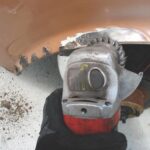Effective inventory management is the backbone of a successful car repair shop. Just like having the right tools for the job, having the right parts in stock, at the right time, and at the right cost is crucial for smooth operations and customer satisfaction. Inefficient inventory practices can lead to lost revenue, delayed repairs, frustrated customers, and ultimately, a struggling business. This guide will provide a comprehensive, step-by-step approach to mastering inventory management at your car repair shop, ensuring you optimize your stock, streamline your processes, and boost your bottom line.
Why Efficient Inventory Management Matters for Your Auto Repair Shop
Reduced Costs and Increased Profitability
Poor inventory control often translates directly to wasted money. Overstocking ties up capital in parts that sit on shelves, depreciating in value and potentially becoming obsolete. Conversely, stockouts lead to delays, requiring rush orders at higher prices and potentially losing customer business to competitors who can complete repairs faster. Effective inventory management minimizes both these scenarios, ensuring you invest only in necessary parts and avoid costly expedited shipping. By optimizing your parts inventory, you free up cash flow and improve your profit margins significantly.
Streamlined Operations and Faster Turnaround Times
Imagine a scenario where a customer needs a common brake pad replacement, but your shop is out of stock. This not only delays the repair but also disrupts your workflow. Efficient inventory management ensures that frequently used parts are readily available, allowing your technicians to work without interruption. Faster access to parts means quicker repair times, increased shop throughput, and happier customers who appreciate prompt service. This efficiency also allows your team to handle more jobs per day, directly contributing to increased revenue.
Enhanced Customer Satisfaction and Loyalty
Customer satisfaction is paramount in the competitive auto repair industry. When customers bring their vehicles in for repair, they expect timely and efficient service. Inventory management plays a crucial role in meeting these expectations. By having the necessary parts on hand, you can minimize delays, complete repairs on schedule, and provide a seamless experience. Satisfied customers are more likely to become repeat customers and recommend your shop to others, building a loyal customer base and positive word-of-mouth referrals, which are invaluable for long-term success.
Data-Driven Decision Making and Improved Forecasting
Effective inventory management isn’t just about knowing what you have in stock; it’s about understanding your inventory data to make informed business decisions. By tracking sales trends, part usage, and lead times, you gain valuable insights into demand patterns. This data empowers you to forecast future needs more accurately, optimize ordering schedules, and avoid both overstocking and stockouts. Data-driven inventory management allows you to move from reactive ordering to proactive planning, leading to a more efficient and profitable operation.
Key Steps to Optimize Your Car Repair Shop Inventory
1. Implement a Robust Inventory Management System
The foundation of effective inventory management is choosing the right system. Gone are the days of relying solely on manual spreadsheets or paper-based systems. Modern car repair shops require a digital inventory management system to handle the complexity and volume of parts.
Choosing the Right System:
- Inventory Management Software: Specialized software solutions are designed specifically for auto repair shops and offer features like parts catalog integration, automated ordering, real-time tracking, reporting, and integration with point-of-sale (POS) systems. Look for systems that are user-friendly, scalable to your shop’s growth, and offer features that align with your specific needs.
- Spreadsheet Software (for smaller shops): While not as robust as dedicated software, spreadsheet programs like Microsoft Excel or Google Sheets can be a starting point for smaller shops with less complex inventory. Templates can be customized to track parts, quantities, and reorder points. However, manual spreadsheets are prone to errors and can become cumbersome as inventory grows.
Essential Features to Look For:
- Parts Catalog Integration: Seamless integration with automotive parts catalogs (like Epicor, WHI, or OEConnection) allows for quick part lookup, accurate pricing, and efficient ordering.
- Real-Time Inventory Tracking: Monitor stock levels in real-time, know exactly what’s on hand, and avoid stockouts or overstocking.
- Automated Reordering: Set reorder points for parts, and the system will automatically generate purchase orders when stock levels fall below the threshold, ensuring timely replenishment.
- Reporting and Analytics: Generate reports on inventory turnover, sales trends, part usage, and stock valuation to gain insights and optimize your inventory strategy.
- Barcode Scanning: Speed up inventory receiving, picking, and cycle counting with barcode scanning capabilities, reducing errors and improving efficiency.
2. Conduct Regular and Accurate Stocktaking
Knowing what you think you have in stock and what you actually have in stock can be vastly different. Regular stocktaking, also known as physical inventory counts, is essential to ensure the accuracy of your inventory records and identify discrepancies.
Types of Stocktaking:
- Annual Physical Inventory: A comprehensive count of all inventory items, typically done once a year. While thorough, it can be time-consuming and disruptive to operations.
- Cycle Counting: A more efficient approach where a small portion of inventory is counted on a regular, cyclical basis (daily, weekly, or monthly). This allows for continuous inventory accuracy and minimizes disruptions.
Best Practices for Stocktaking:
- Schedule Regularly: Establish a consistent schedule for stocktaking, whether it’s annual, quarterly, or cycle counting.
- Train Your Team: Ensure your team is properly trained on stocktaking procedures to minimize errors and ensure accuracy.
- Use Technology: Utilize barcode scanners or mobile inventory apps to speed up the counting process and reduce manual data entry errors.
- Investigate Discrepancies: When discrepancies are found between physical counts and system records, investigate the root cause to prevent future errors (e.g., receiving errors, theft, data entry mistakes).
- Document Everything: Keep detailed records of stocktaking activities, including dates, items counted, quantities, and any discrepancies found.
3. Implement Effective Demand Forecasting Techniques
Predicting future parts demand is crucial for optimizing inventory levels. Accurate demand forecasting helps you avoid overstocking slow-moving parts and ensures you have sufficient stock of fast-moving items to meet customer needs.
Demand Forecasting Methods:
- Historical Data Analysis: Analyze past sales data, repair orders, and seasonal trends to identify patterns and predict future demand for specific parts. Your inventory management system should provide reports and analytics to facilitate this analysis.
- Sales and Service Projections: Collaborate with your service advisors and technicians to gather insights into upcoming service appointments and anticipated parts needs based on vehicle types and common repairs.
- Lead Time Consideration: Factor in supplier lead times when forecasting demand. Parts with longer lead times require more proactive forecasting to avoid stockouts.
- Promotional and Seasonal Planning: Adjust your forecasts to account for planned promotions or seasonal demand fluctuations (e.g., increased demand for AC parts in summer, tire replacements in winter).
4. Optimize Supplier Relationships and Ordering Processes
Your relationships with parts suppliers and your ordering processes directly impact your inventory efficiency and costs.
Supplier Management Strategies:
- Diversify Suppliers: Don’t rely solely on a single supplier. Establish relationships with multiple suppliers to mitigate risks of supply disruptions and leverage competitive pricing.
- Negotiate Favorable Terms: Negotiate pricing, payment terms, and return policies with suppliers to optimize costs and flexibility.
- Evaluate Supplier Performance: Regularly evaluate supplier performance based on factors like on-time delivery, order accuracy, part quality, and customer service.
- Build Strong Relationships: Foster open communication and collaboration with your suppliers to ensure smooth ordering, timely deliveries, and proactive issue resolution.
Efficient Ordering Processes:
- Centralized Ordering: Establish a centralized ordering process to ensure consistency, prevent duplicate orders, and leverage volume discounts.
- Automated Ordering (where possible): Utilize automated reordering features in your inventory management system to streamline replenishment and reduce manual effort.
- Regular Order Review: Regularly review and optimize your ordering schedules and quantities based on demand forecasts and lead times.
- Minimize Rush Orders: Effective forecasting and ordering processes should minimize the need for expensive rush orders.
5. Organize Your Parts Storage for Maximum Efficiency
The physical layout and organization of your parts storage area significantly impact inventory efficiency and technician productivity.
Storage Optimization Techniques:
- Logical Layout: Organize parts storage based on factors like part type, frequency of use, and size. Group similar parts together and place fast-moving parts in easily accessible locations.
- Clear Labeling and Signage: Use clear and consistent labeling for shelves, bins, and parts containers. Implement effective signage to guide technicians to the right parts quickly.
- Implement FIFO (First-In, First-Out): Rotate stock to ensure that older parts are used before newer ones, minimizing obsolescence and spoilage, especially for perishable items like fluids or sealants.
- Utilize Vertical Space: Maximize storage capacity by utilizing vertical shelving and racking systems.
- Maintain Cleanliness and Order: A clean and organized parts room reduces errors, improves safety, and boosts technician efficiency.
6. Track Key Inventory Metrics and Performance Indicators
Monitoring key performance indicators (KPIs) is essential for evaluating the effectiveness of your inventory management efforts and identifying areas for improvement.
Important Inventory Metrics to Track:
- Inventory Turnover Rate: Measures how quickly your inventory is sold and replaced. A higher turnover rate generally indicates efficient inventory management.
- Stockout Rate: The percentage of time that a part is out of stock when needed. A low stockout rate is desirable to minimize repair delays.
- Carrying Costs: The total costs associated with holding inventory, including storage, insurance, obsolescence, and capital costs. Minimizing carrying costs improves profitability.
- Fill Rate: The percentage of orders that can be fulfilled directly from available stock. A high fill rate indicates good inventory availability.
- Days of Supply (DOS): Indicates how many days of demand can be met with current inventory levels. Optimizing DOS balances inventory availability with carrying costs.
Using Metrics for Improvement:
- Regularly Monitor KPIs: Track these metrics on a regular basis (e.g., monthly or quarterly) to identify trends and potential issues.
- Set Benchmarks and Goals: Establish targets for each KPI based on industry best practices and your shop’s specific needs.
- Analyze Variances: Investigate significant deviations from targets or historical trends to identify root causes and implement corrective actions.
- Data-Driven Optimization: Use KPI data to inform inventory management decisions, optimize ordering policies, and improve overall efficiency.
Conclusion
Mastering inventory management in your car repair shop is an ongoing process that requires commitment, attention to detail, and a willingness to adapt and improve. By implementing the steps outlined in this guide, from choosing the right system to tracking key metrics, you can transform your parts room from a source of frustration to a strategic asset. Efficient inventory management translates to reduced costs, streamlined operations, happier customers, and ultimately, a more profitable and successful car repair business. Embrace these strategies and watch your shop thrive.


